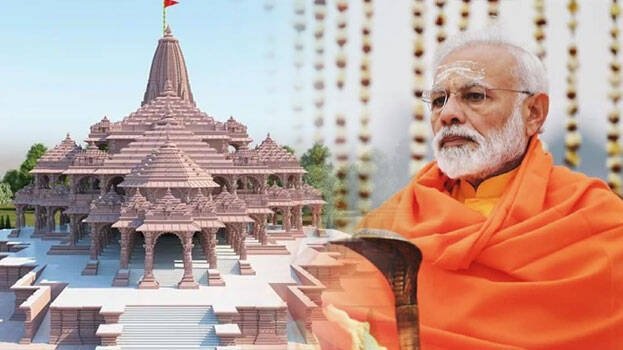Introduction
Ayodhya, the birthplace of Lord Ram and an important religious site for Hindus, is set to witness a historic transformation. Prime Minister Narendra Modi’s visit to Ayodhya on December 30th, 2023, marks the beginning of a new era for this ancient city. With plans to unveil a grand Ram Temple, inaugurate a new airport, and revamp the railway station, Ayodhya is all set to become one of India’s most significant spiritual and tourist destinations.
A Symbolic Journey
Prime Minister Modi’s visit to Ayodhya holds immense significance not only due to its historical context but also as it fulfills long-standing promises made by his political party. The construction of the Ram Temple has been at the forefront of discussions surrounding national identity and religious harmony in India.
The groundbreaking ceremony for the Ram Temple took place in August 2020 after years of legal battles over ownership rights. It symbolizes not just the fulfillment of Hindu aspirations but also represents unity and inclusivity as stated by various community leaders involved in the process.
New Airport Infrastructure
One key aspect that will enhance Ayodhya accessibility is the inauguration of a new airport. The Ayodhya International Airport is being renamed as Maharishi Valmiki International Airport, Ayodhya Dham – further emphasizing its connection with Lord Rama. This upgraded infrastructure will facilitate easier access for pilgrims from across India as well as international tourists wishing to pay homage at this sacred site.
Revamping Railways
In addition to improving air connectivity, efforts are underway to transform Ayodhya Railway Station into an ultra-modern transportation hub befitting its spiritual importance. The revamped rail terminal will cater not only to pilgrims but also other travelers visiting nearby attractions like Faizabad (now known as Ayodhya) or exploring popular tourist spots in Uttar Pradesh.
Tourism and Economic Boost
The development of Ayodhya’s infrastructure is not solely aimed at promoting religious tourism but also to create employment opportunities for the local population. The surge in tourist footfall will lead to a significant boost in the hospitality sector, prompting the establishment of hotels, guest houses, restaurants, and shops catering to visitors’ needs.
Moreover, with increased accessibility and improved facilities, Ayodhya has the potential to attract international tourists interested in exploring India’s rich cultural heritage. This would contribute significantly to economic growth by generating revenue from tourism-related activities and fostering sustainable development.
Preserving Heritage Sites
Ayodhya is not just about Ram Janmabhoomi; it boasts a rich historical legacy that includes various other ancient temples and archaeological sites. As part of the government’s efforts to preserve these heritage structures, plans are underway for their renovation under strict guidelines set by archaeologists and historians.
The restoration projects aim to highlight Ayodhya’s diverse cultural past while ensuring that these sites remain accessible for future generations. By protecting its historical significance alongside new developments like the Ram Temple complex, Ayodhya can strike a balance between preserving its traditions while embracing modernity.
Religious Harmony
Ayodhya has long been associated with interfaith tensions due to disputes over religious structures. However, Prime Minister Modi’s visit signifies his commitment towards fostering unity and harmony among different communities residing within this holy city.
Inclusive policies have been adopted during temple construction – involving representatives from various faiths – as an effort towards building bridges between different religious groups. Such initiatives play an integral role in strengthening social fabric across India by emphasizing coexistence amidst diversity.
Conclusion
Prime Minister Narendra Modi’s visit to Ayodhya marks a monumental moment for both devotees of Lord Rama and those seeking progress through infrastructural development. The grand unveiling of the Ram Temple complex coupled with improvements in transportation infrastructure sets forth a new beginning for Ayodhya.
This historic transformation not only solidifies Ayodhya’s position as a prominent religious destination but also opens up avenues for economic growth and cultural preservation.
Read More:
20VC: The Podcast Shaping the Future of Venture Capital
The Power and Responsibility of Filmmakers: Examining “dpbossreal.com: The Kerala Story”
Box Office Clash: Shah Rukh Khan’s ‘Dunki’ Triumphs over Prabhas’ ‘Salaar’

